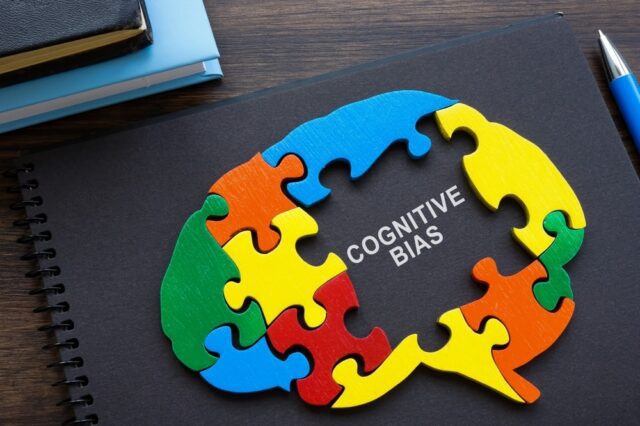Why do some people defuse tension so easily, while others only make it worse? The skill behind that difference is called emotional intelligence.
According to psychologist Daniel Goleman, emotional intelligence is far from being just about “being nice.” Emotional intelligence (EI) is about reading the room, having a deeper understanding of your reactions, and navigating hard moments without making things worse.
EI includes five core abilities:
- Self-awareness
- Self-regulation
- Motivation
- Social awareness
- Relationship management
The problem is that most people think they’re good at EI when they’re not. Research shows that while 95% of us believe we have self-awareness, only about 10-15% actually do. In the workplace, emotional intelligence matters because it drives 58% of performance across roles.
If that sounds surprising, think about what happens when emotions run high: emails get misread, coworkers shut down, and teams fracture. So yes, emotional intelligence, workplace conflict, and trust-building under pressure define how resilient teams stay grounded when tensions rise.
The Significance of Emotional Intelligence in the Workplace
Tension happens. The question is: Who’s equipped to handle it in a way that builds connection rather than damage? High emotional intelligence comes in as a core part of what keeps teams functional and human. And in workplaces full of pressure, deadlines, and competing personalities, those qualities can make all the difference.
Emotional Intelligence Builds Psychological Safety
You know that feeling when you can speak freely in a group, even when the topic is uncomfortable? That’s psychological safety. And it’s built, in large part, by people who show self-awareness and manage their emotional conflict rather than react impulsively.
Almost everyone thinks they have self-awareness. Studies show 95% believe they are, but only a fraction reflect that in real-time behavior. That’s how emotions cloud feedback conversations, or how someone’s silence gets misread as disrespect.
Building safety means doing a few simple but rare things:
- Taking responsibility for your tone and timing
- Listening actively instead of waiting to reply
- Making room for disagreement without personalizing it
Empathy Enhances Team Collaboration
When teams lose their emotional thread, where people feel ignored, dismissed, or misunderstood, it becomes harder to stay aligned, no matter how smart the group is.
Empathy is not performative niceness but real social awareness. The kind that allows you to notice the other person’s point even when it doesn’t match yours.
A simple team practice like a quick “mood check” at the start of meetings can create space for this. Whether it’s a word, a color, or an emoji, the point is connection. A tiny moment that reminds people they’re working with humans, not just titles.
Empathy also strengthens interpersonal relationships, especially during stressful sprints or delayed deadlines. People are just more willing to pull together when they feel emotionally seen.
Self-Regulation Prevents Escalation
Here’s a familiar story: You get a Slack message that feels off. Maybe rude or even passive-aggressive. Your pulse picks up. You start typing.
That moment, the one right before you hit send, is where self-regulation lives. It’s the pause. The decision not to escalate. Maybe you take a breath. Maybe you will rewrite it later.
Self-regulation is about creating enough space between emotion and action so you can respond thoughtfully. That skill keeps things from spiraling and helps preserve interpersonal relationships even in tense moments.
EI Supports Stronger Leadership
Emotionally intelligent leaders don’t micromanage or avoid conflict. They build trust by being human. This includes owning mistakes, modeling calm under pressure, and practicing active listening even when things get tense.
Effective communication in this case should align teams instead of fragmenting them. When a manager notices non-verbal cues, checks in, and encourages constructive disagreement, it sets a healthier tone.
Effective leadership requires vision as well as emotional fluency. That’s especially true in people-facing roles, where emotional intelligence in HR shapes how organizations support, develop, and retain their teams.
Motivation Fosters Resilience in High-Stress Roles
When a job is demanding, whether it’s ICU nursing, emergency response, or front-line customer service, motivation shifts from “do more” to “stay grounded.”
Goleman’s version of motivation is about intrinsic motivation: showing up because you care. Teams that tap into that kind of drive are more adaptable when pressure spikes.
A study of critical care physicians found that those with high emotional intelligence burned out less and handled workplace stress more skillfully. Not because they had fewer challenges, but because they had the internal tools to navigate them in a constructive manner.
Common Sources of Workplace Conflict, and How EI Disrupts the Pattern
Workplace conflict doesn’t start with shouting. It starts small: a misread message, a calendar left blank, a weird tone in a meeting. Over time, those things build. But emotional intelligence can keep them from turning into something bigger.
Common Sources of Conflict
A lot of tension at work comes down to things we’ve all seen before:
- Miscommunication
- Clashing work styles
- Unmet expectations
- Role ambiguity
- Perceived disrespect
Sometimes, what looks like a conflict is really just emotional buildup. Someone who didn’t feel heard, or a moment when their own emotions went unmanaged.
How EI helps in Resolving Conflicts
Each part of emotional intelligence maps directly to a moment in conflict where things could go better.
- Self-awareness helps people notice when they’re triggered before reacting.
- Self-regulation tempers the urge to snap back.
- Empathy brings in the other person’s perspective, which usually de-escalates the blame.
- Motivation keeps people at the table when a conversation gets uncomfortable.
- Relationship management rebuilds the bridge when trust has been shaken.
In a real-world emotional conflict, these are skills that allow the parties involved to slow down and course-correct. When people understand their emotional responses, they can choose better outcomes that strengthen interpersonal relationships and move toward common ground instead of deeper division.

Strategies to Strengthen Emotional Intelligence in Teams
You don’t have to be “a natural” at emotional intelligence. It can be taught, practiced, and improved, and when teams commit to it, the culture changes.
Encourage Reflective Practices
Journaling, mindfulness breaks, or even checking in with a “mood meter” before meetings can help people become more self-aware. They allow space to reflect, to name what’s going on emotionally, and to respond appropriately rather than impulsively.
It also prevents the kind of friction where emotions cloud what should be simple decisions.
Integrate Empathy-Building Activities
Empathy grows through exposure to stories and perspectives that differ from your own. That could mean structured role-play, or just open-ended questions like “What’s something I might not understand about how you work?”
These practices help employees become more attuned to the person’s point of view and reduce the likelihood of interpersonal conflicts. The result? More trust and less guessing.
When people feel like others show a genuine interest in how they see the world, they’re more willing to collaborate, even when tensions flare.
Normalize Feedback Conversations
Feedback doesn’t have to be a minefield. But if people never talk about hard things, emotional tension just festers.
By creating norms where people can listen actively, share their own perspective, and stay open without defensiveness, teams build a different kind of safety. One where resolving conflicts effectively becomes routine.
Model Emotional Intelligence From the Top
Leadership sets the emotional ceiling of the team. When leaders demonstrate vulnerability and practice relationship management, others follow suit.
For example, when a director says, “I missed the mark,” or asks for feedback without defensiveness, it rewires what’s normal. That tone fosters collaborative problem-solving and supports mental well-being across the board.
Use Emotional Check-ins in Team Settings
Check-ins can feel awkward at first. But they work. A quick “How’s your energy today?” or a shared emoji chart can flag emotional undercurrents before they derail progress.
This kind of alignment helps teams stay grounded, even when discussions get emotionally conflicted, so projects don’t spiral off track.
Benefits of Utilizing Pollack Peacebuilding Systems for Workplace Conflict Resolution
At Pollack Peacebuilding Systems, we guide people toward lasting change. Our human-centered approach helps teams recognize the root of tension, not just the symptoms. We focus on resolving conflicts with tools that improve how people think, speak, and relate.
That’s how we turn difficult conversations into growth opportunities. Each of our programs is designed to meet people where they are and help them develop the emotional intelligence skills needed for a more collaborative workplace.
Structured Conflict Resolution Process
Our conflict resolution work begins long before the first mediation. We start by listening. One-on-one interviews give each team member space to share their experiences and own perspective without interruption or judgment. These conversations help us understand how our own emotions drive the tension and identify emotional triggers that may be feeding it.
The next step in the conflict resolution process is the mediation itself. This is where we focus on helping the parties involved move past blame and into dialogue. We teach how to respond thoughtfully instead of defensively and how to find common ground even in tense situations.
But we don’t stop there. Our conflict resolution process also involves follow-up coaching that supports participants as they re-enter day-to-day work. This coaching reinforces coping strategies and encourages self-regulation during future challenges, skills that are essential for resolving conflicts effectively and sustainably.
Preventative Training and De-escalation Workshops
Conflict resolution isn’t just about what happens after things break down. Conflict resolution is about preventing the breakdown in the first place. We offer preventative training that focuses on early warning signs and emotional responses before they spiral. In our conflict resolution workshops, employees learn how to practice active listening, spot non-verbal cues, and stay calm under pressure.
We also teach how to effectively manage conversations where negative feedback or disagreement might otherwise spark avoidance or reactivity. Through role-playing and guided reflection, participants learn to engage in conflict with a positive attitude and a deeper mutual respect for the other person’s perspective.
These sessions are a chance to have self-awareness, learn how to regulate one’s own emotions, and improve interpersonal functioning across teams.
Industry-Specific Expertise
We’ve worked with people across healthcare, education, law, public safety, and nonprofit sectors. That matters because conflict situations don’t look the same everywhere. A heated exchange between doctors during a shift change carries a different emotional load than a misunderstanding between nonprofit board members.
Our facilitators are trained to read the room, ask better questions, and adapt the approach depending on context. Whether you’re trying to reduce workplace stress in an ER or improve professional relationships in a small nonprofit, our solutions are tailored to meet your reality and not a generic checklist.
This adaptability also ensures that teams can focus on resolving conflicts in ways that are relevant, culturally aware, and aligned with the specific dynamics of their field.
Scalable Support for Remote and Hybrid Teams
We know that workplace conflict doesn’t disappear just because people work from home. In fact, for distributed teams, small tensions often fester longer because they’re harder to detect.
We offer virtual training, mediation, and coaching, all delivered online with the same depth and care as our in-person work. These programs help remote employees practice self-regulation, build social awareness, and clarify tone in written communication.
They also offer the tools to repair when things go off track. Because in remote environments, you don’t always get a second chance unless someone steps in to create one.
Long-Term Culture Transformation
The ultimate goal is to create a workplace culture where parties feel heard and people can grow through conflict rather than avoid it. Over time, our work leads to:
- Lower turnover
- Less burnout
- Increased job satisfaction
- More collaborative problem solving
- Stronger, more emotionally intelligent leadership
These outcomes come from building environments where people feel safe to speak, reflect, and challenge ideas constructively. We focus on relationship management as a long-term practice, not a one-off intervention.
That’s what makes our work sustainable. We help shape systems where emotions effectively guide, not derail, team dynamics.

Steps to Implement Emotional Intelligence Training in the Workplace
Building high emotional intelligence across an organization is a process that requires planning, patience, and the right kinds of support. Here’s how to begin.
Step 1 – Assess Emotional Climate
Before you roll out any training, take a clear-eyed look at the current emotional landscape. That means running surveys, gathering anonymous feedback, and observing how employees interact during stressful moments.
These culture audits reveal patterns: who’s disengaging, where conflicts arise, and whether people feel psychologically safe to speak up. By naming the emotional realities of the organization, you create a strong foundation for growth.
Step 2 – Secure Buy-In From Leadership
If leaders aren’t on board, nothing sticks. That’s why the second step is aligning emotional intelligence goals with your organization’s strategy.
When leadership understands how an employee’s level of emotional intelligence, including their ability to practice self-regulation and demonstrate social awareness, directly improves performance, productivity, and retention, they’re more likely to invest in long-term change.
We encourage decision-makers to model these shifts themselves. When leaders show they’re willing to grow emotionally by being transparent, listening, and practicing self-awareness, it sends a clear message: This work matters.
Step 3 – Roll Out Skills-Based Training
Next comes the rollout. Training sessions should focus on specific, transferable skills:
- Active listening
- Giving feedback
- Navigating emotional triggers
- Recognizing nonverbal communication
These workshops help participants name their own emotions, have a deeper understanding of the person’s point, and build positive relationships across departments.
This is where theory becomes practice. Instead of just learning about emotional intelligence, employees experience what it feels like to be more emotionally grounded, more curious, and more intentional during hard moments.
Step 4 – Embed Reinforcement Tools
One-off training won’t stick unless it’s followed up with reminders, nudges, and space for reflection. We recommend micro-learning modules, team check-ins, and coaching sessions that keep relationship management top of mind.
By building habits like emotional debriefs after meetings or “How are you really?” pauses before big discussions, teams keep the momentum alive. These moments encourage people to stay calm, listen actively, and effectively manage tension in real time.
Step 5 – Measure, Adapt, and Sustain
The final step is measurement. That means tracking engagement, retention, collaboration, and even conflict resolution metrics over time. Are people reporting fewer blow-ups? Are teams completing projects with less friction?
Tying emotional intelligence outcomes to business goals helps sustain them. It also shows people that this is a strategic investment in building a more productive environment.
Long-Term Impacts of Improved Emotional Intelligence on Business Outcomes
The benefits of strong emotional intelligence don’t end in the HR department. They show up across the organization in real and measurable ways.
Burnout drops. Through self-awareness, employees feel more capable of managing stress, naming needs, and connecting meaningfully with others. That doesn’t just protect mental health; it improves professional life overall.
Team collaboration becomes less about egos and more about ideas. People feel safe disagreeing. Positive relationships form across silos, allowing more fluid decision-making and intelligent ways of resolving conflicts.
Leadership improves, too. Not because people become perfect, but because they develop more self-awareness, grow curious about others, and become less reactive in moments of pressure. These shifts ripple outward, shaping how people give feedback, lead meetings, and show up for each other.
When these elements come together, conflict resolution in the workplace is proactive, not reactive, and disagreements lead to clarity, not chaos.
Building a More Emotionally Intelligent Culture Starts Here
Emotional intelligence plays a crucial role in workplace success. Not because it prevents conflict, but because it helps people move through it with skill, awareness, and care.
At Pollack Peacebuilding Systems, we provide the tools and also build relationships. Our workplace consulting services are designed to help your team cultivate self-awareness and foster communication over the long haul. Whether through coaching, mediation, or full-scale training programs, we offer support that scales with your organization.
If your teams are navigating tension, burnout, or just need a reset, contact us. Emotional intelligence plays a critical role in turning those challenges into opportunities. Let’s build something better together.



